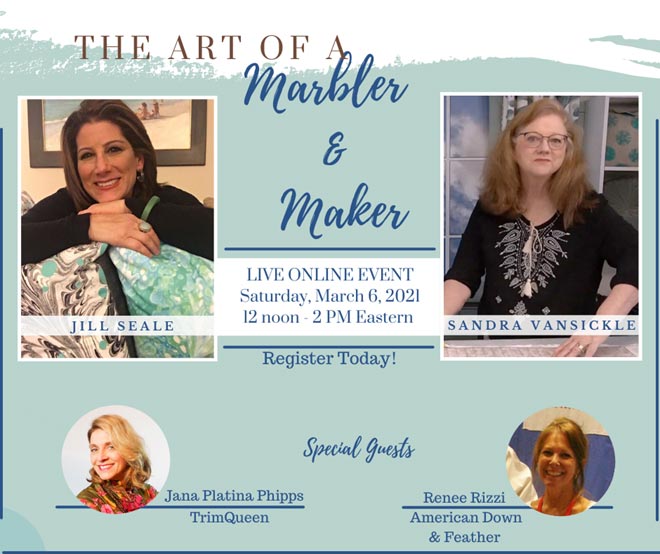Have you always been intrigued by marbling and want to learn the ancient technique yourself? Now you can and with a modern twist!

Join me on Saturday, March 6 at 12 p.m. EST for a special presentation “The Art of a Marbler & Maker.” In this two-hour Skill Swap Webinar, renowned author, designer, and marbler, Jill Seale guides me step by step as I marble my own design.
Then, we will turn the tables and I will instruct Jill as she creates a flanged lumbar pillow – complete with an invisible zipper.
There will be a special appearance by the TrimQueen, Jana Platina Phipps, who discusses trims as an embellishment. Finally, Renee Rizzi from American Down & Feather joins us to share what sets them apart from other pillow companies.
There will be multiple giveaways, so register today to save your spot and be entered for the giveaways.
Sign up HERE
Free! Join us for this very special event